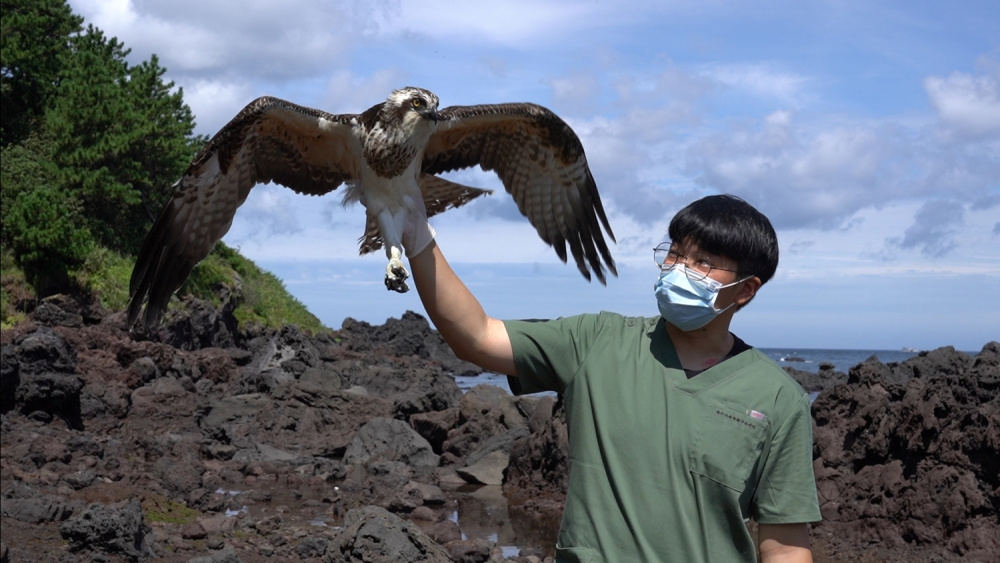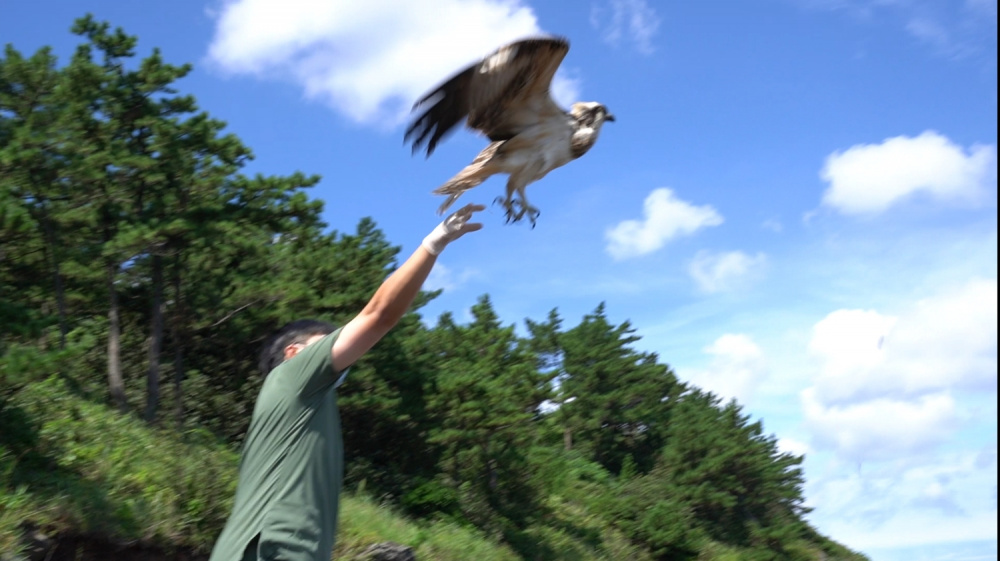Endangered osprey with injuries rescued and released to natur
· Writer : Jeju National University ·Date : 2021-09-14 00:00:00 ·View : 33
-
noImage
야생동물센터, 멸종위기 ‘물수리’ 구조 ‘자연의 품으로’
Endangered osprey with injuries rescued and released to nature

A Pandion haliaetus, also known as an osprey, was rescued and released to nature, Jeju National University’s Wildlife Rescue Center (Jeju Wildlife Rescue Center) announced on Sunday (Aug. 29).
Early on Tuesday (Aug. 24), the migratory bird was found with injuries near the coast of Yongdam, Jeju City. The osprey is designated as a Grade 2 Endangered Species by South Korea’s Ministry of Environment.
According to the Jeju Wildlife Rescue Center, the bird had apparently hit a glass window of a nearby building, which caused its mouth to be bleeding and its right arm to be dislocated. Due to the accident, the endangered bird was unable to hunt for preys and suffered from exhaustion.
After rescuing the bird, the center allocated exclusive specialists to cure the animal. The bird finally recovered from injuries and was released back to nature on Saturday (Aug. 28), near the coast of Dodu.
The osprey is a protected species that is found rarely in Korea during the spring and fall months. Inhabiting coastal lakes and streams, the migratory bird preys on fish. It features a hook-looking beak and big, sharp claws. The bird has a white-colored head and narrow wings, with a short tail. The male and the female ones are hard to distinguish because of the same color. The nest is usually created on coastal cliffs or tree branches. A female osprey usually lays two to four eggs at once between February and June. After hatching in a month, the chicks are raised by the parents for two months.
The bird is known to be found in all of the continents, excluding South Africa and deserts. Globally, only 500,000 ospreys are estimated to live. Its population has sharply decreased lately because of the worsening water quality due to water contamination. The International Union for Conservation of Nature classifies the bird on its Red List of Threatened Species.













 예비대학생
예비대학생 재학생
재학생 졸업생
졸업생 일반인
일반인 교직원
교직원